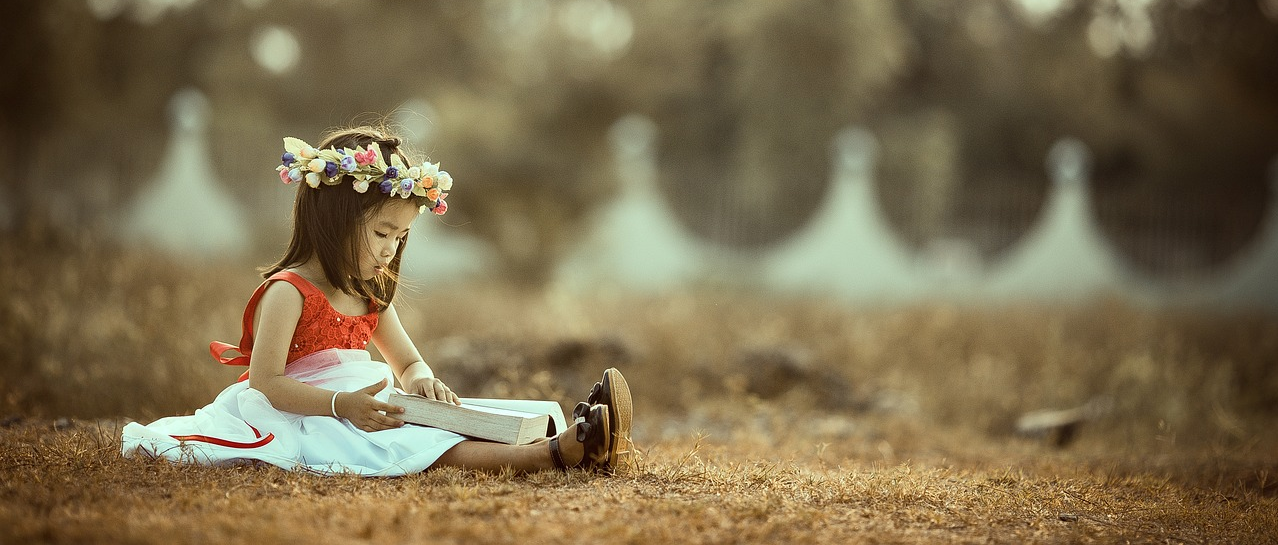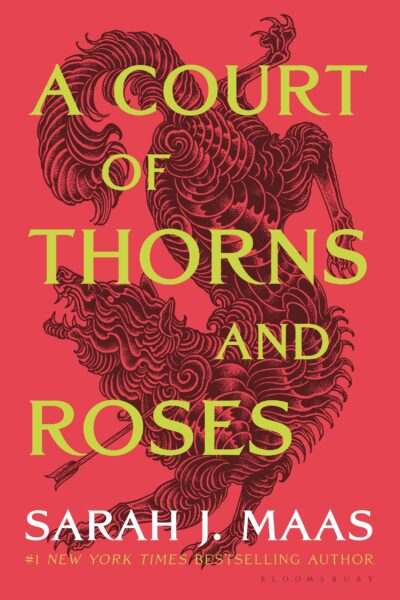A Court of Thorns and Roses
Chapter 9
by Maas, Sarah J.Feyre devises a plan to seek out Lucien alone, hoping to gather information or leverage. She learns from the servant Alis that Lucien is on border patrol and heads to the stables, only to be intercepted by Tamlin. Despite his offer to accompany her, Feyre politely declines, noting his strained attempts at hospitality. Tamlin’s frustration is evident, but he retreats, leaving Feyre to proceed with her mission, determined to avoid his scrutiny and focus on her objective.
Upon reaching the stables, Feyre observes the masked stablehands, who ignore her, likely due to her role in Andras’s death. She finds Lucien already mounted and prepared for patrol. He taunts her with a hunting invitation, questioning her abilities as a Fae-killer. Feyre recognizes his mockery but seizes the opportunity, agreeing to join him despite her discomfort. She remains wary of Tamlin’s potential interference and Lucien’s unpredictable demeanor.
As they ride into the woods, Feyre remains alert, assessing her surroundings for survival tactics rather than admiring the scenery. Lucien comments on her silence, prodding her about her hunting skills. Feyre adjusts to the unfamiliar weight of the provided bow, reflecting on her past sacrifices to acquire her own equipment. She maintains a guarded distance, aware of Lucien’s dual nature and the potential dangers of their interaction.
The chapter highlights Feyre’s strategic thinking and resilience as she navigates the complexities of her captivity. Her interactions with Tamlin and Lucien reveal the tension between her human instincts and the faerie world’s unpredictability. The hunt with Lucien serves as a test of her adaptability, while her internal monologue underscores her determination to survive and outmaneuver her captors, even as she remains wary of their motives.
FAQs
1. What is Feyre’s primary objective in this chapter, and how does she attempt to achieve it?
Answer:
Feyre’s main goal is to locate Lucien alone to gather information and potentially find a way to escape her situation. She strategically questions Alis to learn that Lucien would be at the stables preparing for border patrol. When Tamlin unexpectedly offers to accompany her, Feyre politely declines to maintain her independence and continue her mission. Her determination to speak with Lucien privately demonstrates her resourcefulness and calculated approach to survival in the faerie realm.2. How does Tamlin’s behavior toward Feyre show both conflict and effort in this chapter?
Answer:
Tamlin displays a clear internal conflict between his instincts and his attempts at civility. Though he initially sneaks up on Feyre (showing faerie-like stealth), he makes visible efforts to be accommodating—offering to show her around and rolling up his sleeves to appear less intimidating. However, his tense reactions when rejected (“clenched his hands into fists”) reveal his struggle to control his predatory nature. The chapter notes how “every word seemed to pain him,” illustrating the strain of his forced hospitality toward his human captive.3. Analyze the significance of Lucien’s invitation to hunt with Feyre. What might his motivations be?
Answer:
Lucien’s hunt invitation serves multiple purposes. While he claims curiosity about Feyre’s hunting abilities (referencing how she killed Andras), his mocking tone and mention of “no ash arrows” suggest he’s testing or taunting her. As Tamlin’s emissary, he may be assessing her skills or gathering intelligence. The interaction also reveals Lucien’s boredom and possible resentment toward Feyre, as he seems to enjoy provoking her (“grinning down at me with too-white teeth”). Their uneasy dynamic sets the stage for future conflict or potential alliance.4. How does the chapter portray Feyre’s internal conflict between survival instincts and aesthetic appreciation?
Answer:
Feyre consciously suppresses her admiration for the beautiful spring landscape (“clusters of crocuses that grew like flashes of vibrant purple”) to focus on practical survival details like path shapes and climbable trees. This reflects her hunter’s mindset—prioritizing utility over beauty—but also shows how she must actively resist the estate’s enchantments. The tension between her instinctual appreciation (“marveled at the way the sun illuminated the leaves”) and disciplined practicality demonstrates her struggle to maintain focus in this dangerous yet mesmerizing environment.5. What does the stable scene reveal about the social dynamics between humans and faeries in this world?
Answer:
The stable scene highlights the uneasy coexistence between species. The masked stableboys ignore Feyre completely, either from resentment (for killing Andras) or dehumanization (“because I wasn’t worth it”). Lucien’s reference to her as a “Fae-killer” underscores the racial tension, while his willingness to hunt with her shows some begrudging respect for her skills. The scene establishes that while Tamlin’s orders protect Feyre physically, social acceptance remains elusive, setting up ongoing cultural conflicts in the narrative.
Quotes
1. “I willed calm into my veins, my head. I said as politely as I could, ‘You said I was safe here. So I listened.’”
This quote captures Feyre’s cautious defiance and strategic thinking as she navigates her precarious situation in the faerie realm. It shows her using Tamlin’s own words against him while maintaining surface-level compliance.
2. “Again, that effort to be accommodating, even when every word seemed to pain him. Maybe he could eventually be swayed by Lucien.”
This reveals Feyre’s growing understanding of Tamlin’s character and her strategic assessment of potential allies. It shows her calculating how to manipulate the dynamics between the faerie lords to her advantage.
3. “Soon enough, if I was lucky, Tamlin wouldn’t be my problem anymore. I hurried for the stables, tucking away the information. Maybe one day, if I was ever released, if there was an ocean and years between us, I would think back and wonder why he’d bothered.”
This introspective moment showcases Feyre’s long-term planning and emotional detachment. It highlights both her survival mindset and the subtle foreshadowing of future relationship developments.
4. “‘Come now. I’m to patrol the southern woods today, and I’m curious about the … abilities you used to bring down my friend, whether accidental or not. It’s been a while since I encountered a human, let alone a Fae-killer. Indulge me in a hunt.’”
Lucien’s provocative invitation reveals the underlying tension between the characters and Feyre’s precarious position. The quote demonstrates how their shared history (Andras’s death) continues to shape their interactions.
5. “Those were things that weren’t necessary to my plans, useless details that only blocked out everything else: the shape and slope of the path, what trees were good for climbing, sounds of nearby water sources. Those things could help me survive if I ever needed to.”
This passage perfectly encapsulates Feyre’s survivalist mentality, showing how she prioritizes practical information over beauty even in this enchanted setting. It reveals her constant state of alertness and preparation.
Quotes
1. “I willed calm into my veins, my head. I said as politely as I could, ‘You said I was safe here. So I listened.’”
This quote captures Feyre’s cautious defiance and strategic thinking as she navigates her precarious situation in the faerie realm. It shows her using Tamlin’s own words against him while maintaining surface-level compliance.
2. “Again, that effort to be accommodating, even when every word seemed to pain him. Maybe he could eventually be swayed by Lucien.”
This reveals Feyre’s growing understanding of Tamlin’s character and her strategic assessment of potential allies. It shows her calculating how to manipulate the dynamics between the faerie lords to her advantage.
3. “Soon enough, if I was lucky, Tamlin wouldn’t be my problem anymore. I hurried for the stables, tucking away the information. Maybe one day, if I was ever released, if there was an ocean and years between us, I would think back and wonder why he’d bothered.”
This introspective moment showcases Feyre’s long-term planning and emotional detachment. It highlights both her survival mindset and the subtle foreshadowing of future relationship developments.
4. “‘Come now. I’m to patrol the southern woods today, and I’m curious about the … abilities you used to bring down my friend, whether accidental or not. It’s been a while since I encountered a human, let alone a Fae-killer. Indulge me in a hunt.’”
Lucien’s provocative invitation reveals the underlying tension between the characters and Feyre’s precarious position. The quote demonstrates how their shared history (Andras’s death) continues to shape their interactions.
5. “Those were things that weren’t necessary to my plans, useless details that only blocked out everything else: the shape and slope of the path, what trees were good for climbing, sounds of nearby water sources. Those things could help me survive if I ever needed to.”
This passage perfectly encapsulates Feyre’s survivalist mentality, showing how she prioritizes practical information over beauty even in this enchanted setting. It reveals her constant state of alertness and preparation.
— Unknown
FAQs
1. What is Feyre’s primary objective in this chapter, and how does she attempt to achieve it?
Answer:
Feyre’s main goal is to locate Lucien alone to gather information and potentially find a way to escape her situation. She strategically questions Alis to learn that Lucien would be at the stables preparing for border patrol. When Tamlin unexpectedly offers to accompany her, Feyre politely declines to maintain her independence and continue her mission. Her determination to speak with Lucien privately demonstrates her resourcefulness and calculated approach to survival in the faerie realm.
2. How does Tamlin’s behavior toward Feyre show both conflict and effort in this chapter?
Answer:
Tamlin displays a clear internal conflict between his instincts and his attempts at civility. Though he initially sneaks up on Feyre (showing faerie-like stealth), he makes visible efforts to be accommodating—offering to show her around and rolling up his sleeves to appear less intimidating. However, his tense reactions when rejected (“clenched his hands into fists”) reveal his struggle to control his predatory nature. The chapter notes how “every word seemed to pain him,” illustrating the strain of his forced hospitality toward his human captive.
3. Analyze the significance of Lucien’s invitation to hunt with Feyre. What might his motivations be?
Answer:
Lucien’s hunt invitation serves multiple purposes. While he claims curiosity about Feyre’s hunting abilities (referencing how she killed Andras), his mocking tone and mention of “no ash arrows” suggest he’s testing or taunting her. As Tamlin’s emissary, he may be assessing her skills or gathering intelligence. The interaction also reveals Lucien’s boredom and possible resentment toward Feyre, as he seems to enjoy provoking her (“grinning down at me with too-white teeth”). Their uneasy dynamic sets the stage for future conflict or potential alliance.
4. How does the chapter portray Feyre’s internal conflict between survival instincts and aesthetic appreciation?
Answer:
Feyre consciously suppresses her admiration for the beautiful spring landscape (“clusters of crocuses that grew like flashes of vibrant purple”) to focus on practical survival details like path shapes and climbable trees. This reflects her hunter’s mindset—prioritizing utility over beauty—but also shows how she must actively resist the estate’s enchantments. The tension between her instinctual appreciation (“marveled at the way the sun illuminated the leaves”) and disciplined practicality demonstrates her struggle to maintain focus in this dangerous yet mesmerizing environment.
5. What does the stable scene reveal about the social dynamics between humans and faeries in this world?
Answer:
The stable scene highlights the uneasy coexistence between species. The masked stableboys ignore Feyre completely, either from resentment (for killing Andras) or dehumanization (“because I wasn’t worth it”). Lucien’s reference to her as a “Fae-killer” underscores the racial tension, while his willingness to hunt with her shows some begrudging respect for her skills. The scene establishes that while Tamlin’s orders protect Feyre physically, social acceptance remains elusive, setting up ongoing cultural conflicts in the narrative.



0 Comments